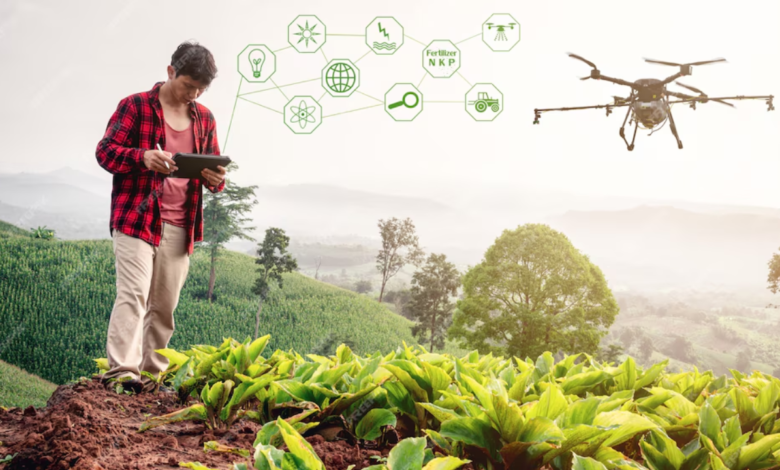AgriTech Software Development: Innovative Agriculture Software Solutions for Smarter Farming

In recent years, AgriTech software development has revolutionized the agricultural sector. With the growing demand for food due to the increasing global population and climate challenges, the integration of innovative software solutions into farming has become a game-changer. From precision farming to automated systems, AgriTech is paving the way for a smarter and more sustainable future.
What Is AgriTech Software Development?
AgriTech, short for agricultural technology, refers to the development and use of software and digital tools to enhance farming practices. This includes applications for data analysis, farm management, and automated machinery, among others. By integrating modern technologies like artificial intelligence (AI), the Internet of Things (IoT), and blockchain, AgriTech software is transforming agriculture into a data-driven industry.
Why Is AgriTech Software Essential?
In a world facing challenges like climate change, limited resources, and food security, AgriTech software development plays a crucial role. It enables:
- Efficient Resource Management: Smart software optimizes the use of water, fertilizers, and pesticides.
- Increased Yield: Data-driven insights ensure maximum crop output.
- Sustainability: AgriTech promotes eco-friendly farming by reducing waste and emissions.
Key Features of AgriTech Software
To address the unique needs of modern farmers, AgriTech software often includes the following features:
- Farm Management Systems: Tools to monitor and manage daily farm operations efficiently.
- Precision Agriculture: Software that analyzes data for targeted farming techniques.
- Weather Forecasting: Applications providing real-time weather updates to plan farm activities.
- Crop Monitoring: AI-powered tools that assess crop health and detect diseases.
- Supply Chain Management: Platforms ensuring seamless movement of goods from farm to market.
Types of AgriTech Software Solutions
Farm Management Software
Farm management systems are comprehensive platforms that allow farmers to oversee and control every aspect of their operations. From tracking soil quality to managing labor, these tools simplify decision-making.
IoT-Based Solutions
IoT devices, such as sensors and drones, collect real-time data from fields. This information is processed by software to help farmers take timely actions, such as irrigation or pest control.
AI-Driven Tools
Artificial intelligence is at the heart of many AgriTech solutions. From predicting yield to identifying crop diseases, AI enhances efficiency and reduces human error.
Blockchain for Transparency
Blockchain technology ensures transparency and traceability in the food supply chain. It allows consumers to verify the origins of their food and ensures farmers receive fair compensation.
Mobile Applications
User-friendly mobile apps enable farmers to access crucial information, such as market prices, on the go. These apps are particularly beneficial for smallholder farmers.
The Benefits of AgriTech Software
The adoption of AgriTech software brings numerous advantages to the agricultural sector:
- Cost Reduction: Automating processes lowers labor and operational costs.
- Improved Decision-Making: Access to real-time data empowers farmers to make informed choices.
- Sustainability: By minimizing waste and optimizing resources, AgriTech contributes to sustainable farming.
- Increased Profitability: Higher yields and efficient practices lead to better financial outcomes.
The Role of Custom Software Development
Off-the-shelf software solutions may not always meet the unique needs of different farms. Custom AgriTech software development offers tailored tools that align with specific requirements, such as:
- Crop-Specific Solutions: Software designed for particular types of crops.
- Region-Specific Features: Tools considering local weather and soil conditions.
- Scalability: Systems that grow with the farm’s needs.
Challenges in AgriTech Software Development
Despite its potential, AgriTech software development faces some hurdles:
- High Initial Costs: The investment in technology can be prohibitive for small-scale farmers.
- Digital Literacy: Many farmers lack the skills to use advanced tools effectively.
- Data Privacy Concerns: Collecting and storing farm data raises privacy and security issues.
Future Trends in AgriTech Software
Robotics and Automation
Robotics is set to transform farming, with software enabling tasks like planting, harvesting, and weeding to be done autonomously.
Big Data Analytics
The integration of big data allows for deeper insights into farming practices, enabling predictive analytics and smarter decision-making.
Satellite Imaging
Satellite technology combined with AgriTech software provides farmers with a bird’s-eye view of their fields, aiding in large-scale monitoring.
Climate-Smart Solutions
As climate change continues to impact agriculture, software that predicts weather patterns and mitigates risks will be in high demand.
How to Choose the Right AgriTech Software
When selecting an AgriTech solution, consider the following:
- Ease of Use: Choose software with an intuitive interface.
- Scalability: Ensure it can grow with your farm’s needs.
- Customer Support: Opt for providers offering robust technical support.
- Integration: Look for software compatible with your existing systems.
Also Read:- AI in Agriculture: Reducing Waste and Improving Efficiency
Conclusion
AgriTech software development is a cornerstone of modern farming. By leveraging advanced technologies, it addresses critical challenges, enhances efficiency, and paves the way for sustainable agriculture. Whether through AI, IoT, or blockchain, the opportunities are vast, making AgriTech indispensable for the future of farming. As the agricultural sector continues to embrace innovation, the potential for smarter, more sustainable practices becomes limitless.
By adopting the right AgriTech solutions, farmers can not only improve productivity but also contribute to a more resilient and sustainable global food system.